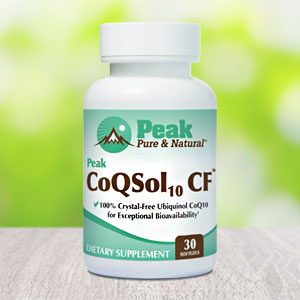Get Easy Health Digest™ in your inbox and don’t miss a thing when you subscribe today. Plus, get the free bonus report, Mother Nature’s Tips, Tricks and Remedies for Cholesterol, Blood Pressure & Blood Sugar as my way of saying welcome to the community!
Evidence long COVID zaps your cellular power generators

While we know far more about COVID-19 than we did when it first hit, there’s much that we’re still learning about the virus that kicked off a pandemic.
One of the biggest mysteries has been why some people who contract COVID don’t truly recover, but instead continue to suffer symptoms ranging from subtle to debilitating for months post-infection.
This so-called Long COVID can lead to life-altering health issues that keep people from returning to their everyday activities and life.
It’s exactly what happened to Joanna Zieger, a former Olympic triathlete and Ironman champion, who continues to struggle with fluctuating heart rates, extreme fatigue and memory issues five months after having COVID.
While exercise used to make up a major part of her day-to-day activities, these days, she struggles just to take her dog for a walk or climb a flight of stairs.
“As soon as I start to move, my heart rate just skyrockets and my inability to focus and retain information is really affecting my work and my home life,” Zieger says. “Being physically active is really important to my mental health as well, and it’s been tough to have that taken away.”
Although some research has indicated that Long COVID may be tied to micro-clots in the blood vessels, scientists are still searching for all of the answers in a bid to stop the suffering for people like Zieger all over the world.
Luckily, one of those answers may just have been discovered by a team of doctors at the National Jewish Health Center for Post-COVID Care and Recovery.
Down to the cellular level
The issues behind post-COVID syndrome have generated mountains of confusion across the world. Irina Petrache, MD, chief of the Division of Pulmonary at National Jewish Health and a co-author of the study, explains why that is.
“There is no common characteristic among those experiencing post-COVID syndrome. We see patients who are young and old, those with mild and severe cases of COVID and those who are active and healthy as well as some with pre-existing conditions.
“Some have subtle symptoms while others experience very obvious, life-altering health issues that keep them from returning to their normal day-to-day life. For most, initial testing of their heart and lungs was normal, so we looked deeper to the cellular level.”
To do this, the team conducted exercise testing, monitoring hundreds of data points as patients suffering from Long COVID became fatigued on an exercise bike. Their breathing and heart function was monitored. And some even had an arterial line inserted to track blood oxygen levels.”
And that’s when the breakthrough happened…
The team discovered that it wasn’t damage to the heart or lungs of patients that resulted in ongoing symptoms. Instead, it involved their mitochondria — organelles in cells that are responsible for generating energy.
In fact, the researchers found that people living with long COVID symptoms have mitochondria that no longer function properly — and that impacts not only dysfunction in muscle tissues, but also in pulmonary and neurological systems as well.
It’s a discovery that researchers hope will lead to treatments for patients like Zieger, who continues to struggle with symptoms that negatively impact their daily life long after COVID should be in their rear-view mirror.
Supporting mitochondrial health
Researchers plan to build upon the discoveries in the current study to better understand how the virus alters cells and how those effects can be reversed or repaired
But what can you do in the meantime if, like Zieger, you’re a COVID long-hauler?
The answer could like in supporting and strengthening those mitochondria that seem to misfire thanks to the virus.
And fortunately, two nutrients have been researched for their effects on mitochondria.
The first is Coenzyme Q10 or CoQ10. CoQ10 is normally produced by the body, but production diminishes with age. Supporting your stores of this important nutrient are a no-brainer, beyond long COVID.
You can find it in foods like beef, herring, mackerel, sardines, broccoli, peanuts and soybeans, but to ensure you get enough, most experts recommend taking a high-quality supplement.
The second nutrient for improved mitochondrial health is known as Pyrroloquinoline quinone (PQQ).
Like with CoQ10, it’s available in a range of foods, including kiwis, green peppers, carrots, sweet potatoes and oranges, but taking a daily supplement helps to make up any dietary shortfalls so that you know you’re doing the most for your body.
Editor’s note: There are perfectly safe and natural ways to decrease your risk of blood clots including the 25-cent vitamin, the nutrient that acts as a natural blood thinner and the powerful herb that helps clear plaque. To discover these and other secrets of long-lived hearts, click here for Hushed Up Natural Heart Cures and Common Misconceptions of Popular Heart Treatments!
Sources:
Study reveals root cause of long-term COVID symptoms – EurekAlert!













